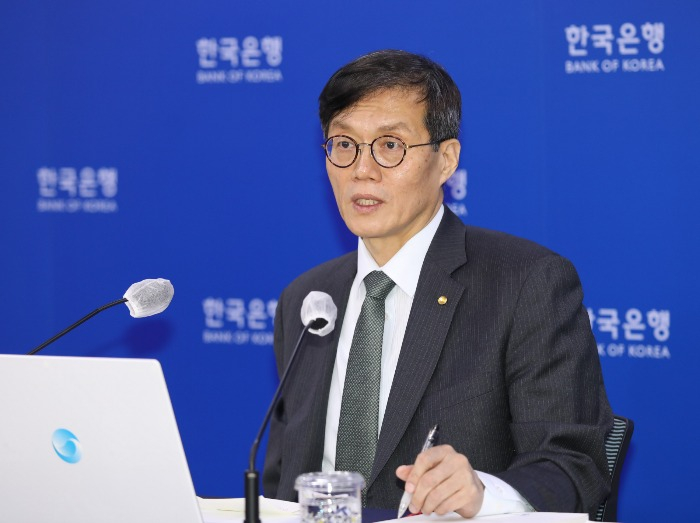Economy
Bank of Korea gives bearish outlook after rate hike
BOK governor says the South Korean economy probably contracted in Q4, 2022 and its 2023 growth forecast could be further lowered
By Jan 13, 2023 (Gmt+09:00)
1
Min read
Most Read
LG Chem to sell water filter business to Glenwood PE for $692 million


Kyobo Life poised to buy Japan’s SBI Group-owned savings bank


KT&G eyes overseas M&A after rejecting activist fund's offer


StockX in merger talks with Naver’s online reseller Kream


Mirae Asset to be named Korea Post’s core real estate fund operator



South Korea’s central bank on Friday raised interest rates by a quarter point to 3.5%, while signaling a further cut in its economic growth forecast just two months after revising it lower.
The rate hike marked the Bank of Korea’s (BOK) seventh rate move since it began the tightening policy in April of last year.
It is also the first time ever for the BOK to deliver seven interest rate hikes in less than a year.
The rate move was broadly in line with market expectations after the consumer price index climbed 5% last month from the year prior.
Despite coming off the peak of 6.3% touched in July 2022, it has remained in the 5% range for eight months in a row.
In a New Year speech last week, Bank of Korea Governor Rhee Chang-yong reaffirmed that he would continue to prioritize price stability over economic growth this year.
After the January monetary policy committee meeting, Rhee said in a news conference that the South Korean economy probably contracted in the fourth quarter of last year.
He cited the fallouts of COVID-19 infections in China, the slowing semiconductor industry and last October’s deadly crowd crush in Seoul.
The governor added that the BOK’s forecast for the 2023 economic growth could be further lowered from the previous 1.7% projected in November of last year.
But economists see little likelihood of the Korean central bank stopping its tightening stance anytime soon, given the rate differential with the US. Higher US interest rates could prompt capital outflows to the US.
Friday’s rate raise narrowed the rate differential between the two countries to one basis point. The US interest rate is in the range of 4.25-4.5%.
The gap could widen again to 1.25% next month, however, as the US Federal Reserve reaffirmed its commitment to keep interest rates high.
Write to Hyun-Mi Cho at miwise@hankyung.com
Yeonhee Kim edited this article
More to Read
-
 EconomyKorea inflation slows, but BOK may still hike interest rates
EconomyKorea inflation slows, but BOK may still hike interest ratesSep 02, 2022 (Gmt+09:00)
2 Min read -
 Central bankBOK unexpectedly hikes interest rate as inflation accelerates
Central bankBOK unexpectedly hikes interest rate as inflation acceleratesApr 14, 2022 (Gmt+09:00)
2 Min read -
 Banking & FinanceBOK restores interest rates to pre-pandemic level
Banking & FinanceBOK restores interest rates to pre-pandemic levelJan 14, 2022 (Gmt+09:00)
3 Min read
Comment 0
LOG IN


